August, 2017 News
Nominations 2018 Executive and Committee of Management
With this newsletter is the nomination form for the 2018 Committee. All instructions are on the form. Phil Taylor is again our Returning Officer. Please remember you only have to be a financial member to stand for Committee: you do not have to be a hangar worker. Committee meetings are once a month, generally on the second Saturday and we ask Committee members to work in the hangar on a Sunday once every 6 weeks.
History of Restoration
Several years ago one of our members, Don Davis, wrote a book detailing the steps of the restoration up to 2000 when we dedicated A72-176 to the nation. We sell this booklet in the hangar shop. We often get asked about an update so Dave Miller has now written one detailing progress from 2000 to 2017. This is now on sale in the shop at $8.00 per copy. It’s printed in black and white and bound.
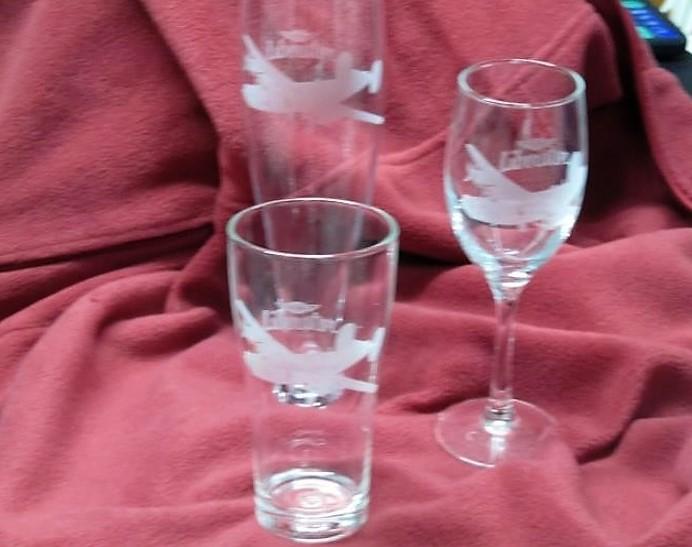
Also, now in the shop, we have etched white wineglasses and beer glasses at $10.00 each.
Air Force Association
The B-24 Liberator Branch of the Association has been formed with a temporary Executive setting it up: President: Paul Rourke Secretary: Tony Muller Treasurer: Bob Rose If you are interested in joining please contact either Paul (97415601) or Tony (97414635). It will be a social club and Tony is planning some interesting day tours. On 24th August at 2pm there will be a meeting at the hangar to formally elect the executive. Carl Schiller will chair this meeting. So far there have been over 40 applications to join.
Hangar Security
Some time ago one of our members donated a sum of money so we could set up security cameras to monitor the exterior of the hangar. There is still capacity on the system to add another 2 cameras, an option we’ll look into. We have had an interior monitoring system for some years. That investment has paid off BIG time. We were robbed in the early hours of 14th July and, thanks to the cameras and to not very bright thieves, we snapped a lovely clear photo of one of the offenders who just happened to be “known” to the police who visited him and recovered our property. The thieves got into the covered sections between the containers stored at the edge of the carpark. Nothing of value to anyone but us was taken and the police recognised this and did a great job in not only recovering our stuff but by getting it back to us within a matter of days.
Our grateful thanks to our benefactor and the local police.
Liberator Update
After searching half of the United States for a needed bomb bay release mechanism we managed to find a local supplier. One more problem solved.
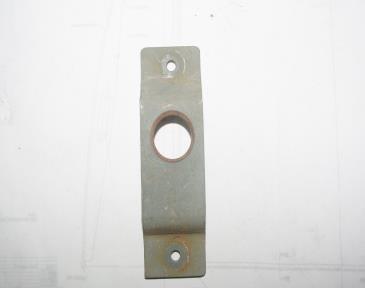
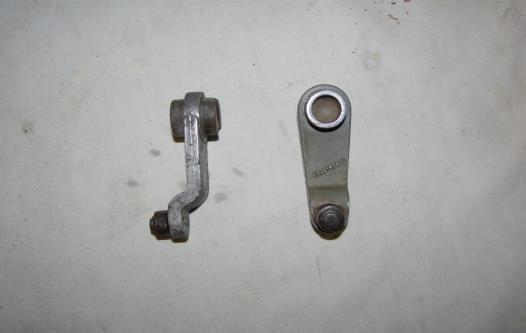
Small but important parts to complete a section of the restoration.
Electrical wiring is an ongoing task at the moment and is proceeding successfully.
Lots of work also being done on turrets. The restoration of the rear turret is almost complete. We currently have 4 front turrets: 1. Last stages of the fit-out are underway. This one will eventually go on the plane. 2. Still being worked on. This one will become the one on the floor so visitors can get a close look at construction and operation. It will also be mobile so we can take it out to displays. 3. This will be completed and offered for sale, probably to a restorer in USA. This money will cover costs incurred by work on the other three. 4. This has been made up of bits from various sources and is currently on the plane. This may be sold as is or dismantled and parts used to complete Turret 3.
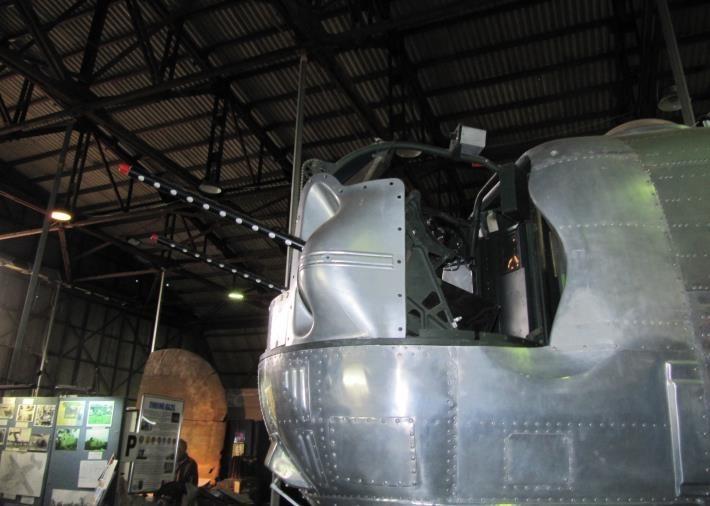
Front Turret 3 on the aircraft nose. Yes, it does need a side panel fitted.
Oxford Update
Work is proceeding slowly. The Oxford workforce has lost a couple of members temporarily so this is causing some delays. Space for the Oxford is an ever increasing problem. The Liberator is the priority for workers and room to work but the Oxford is an essential part of our overall plan. We are currently looking at priorities and rationalising our use of available hangar space is one of those priorities. We may be able to find a bit more room for the “Oxford Boys”.
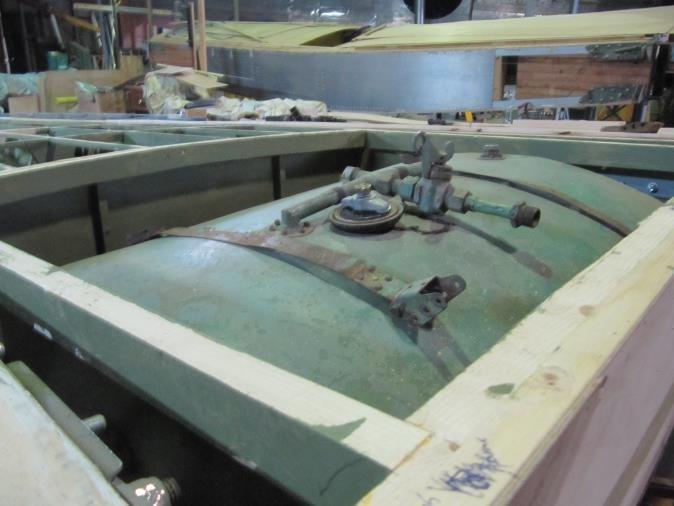
Doug has fitted the fuel tank into the port wing.
This has been fitted just behind the landing lights in the wing.
Ken is proceeding with the trailing edge of the wing spar and, at the moment is gluing stiffeners in the spar to give it strength. Work is also being done to mark out the cockpit floor. Really important that the cut out parts line up with the rest of the section.
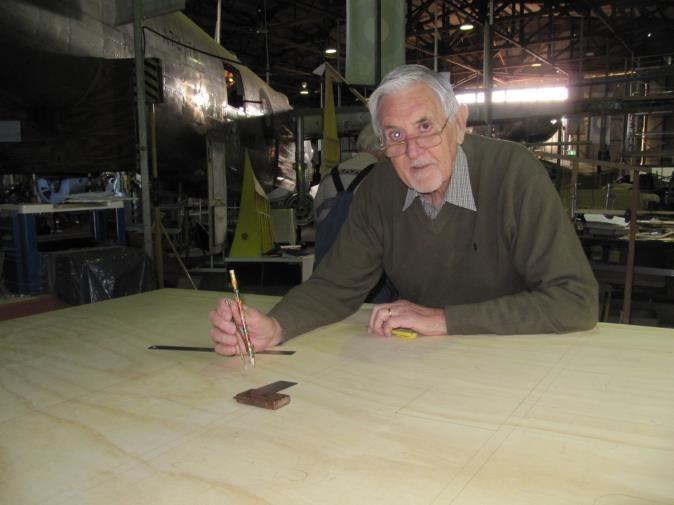
Ken
Oxford History
Designed for all aspects of aircrew training, the prototype Airspeed Oxford first flew in 1937 and was the military version of the Airspeed Envoy. At the outbreak of WW II, Oxfords were selected as trainers for the Empire Air Training Scheme (EATS), and a total of 8,751 Oxfords served in Britain, Australia, Canada, New Zealand, Rhodesia and the Middle East. In Australia, the prefix A25 was allocated for RAAF use but the imported Oxfords retained their RAF serials. A total of 391 Oxfords were shipped to Australia and the first aircraft, P6878, was received on 28 October 1940 and the last -- LW999 -- on 20 March 1944. Known to
trainees as the 'Ox Box', the Oxfords were used at EATS schools for instruction in flying, navigation, gunnery, radio and bombing. In addition Mk II versions operated with Nos 1, 2 and 5 Communication Units. Post-War, Oxfords remained in service as trainers and communication aircraft until they were finally withdrawn from service in 1953. Together with the Avro Anson, the Airspeed Oxford was responsible for all initial multi-engined training in the RAAF for over a decade.
Thanks Ian and Andrew for this information.
Frequently Asked Questions About A72-176
Will it fly? No. As a self-funded group we haven’t been able to afford the costs associated with reaching this target. Meeting ongoing maintenance and flying costs is also beyond our capabilities. If we flew it and broke it we would defeat our prime objective of creating an ongoing memorial.
How many rivets? Lots!!!!
How many man hours spent so far? We’ve calculated that, between 1995 and 2016 we have spent 176,400 hours on the restoration.
What was the bomb load? Liberators carried a 12,800 lbs bomb load on a short range mission. For long range missions more fuel had to be carried so fewer bombs were loaded.
How high did it go? Ceiling was 28,000 feet. At this height it was necessary to carry oxygen for the crew.
When will it be finished? We can’t put a time on this. We can’t complete A72-176 in its current location as we don’t have the room to fit the wing tips or the tailplane. We can’t move into a larger building until Heritage Victoria makes a decision about the second, larger building we need to complete the museum precinct. When we have 2 buildings the Liberator will move onto the larger one, the smaller will be our workshop.
How will you move it? Remove the port and starboard outer wing assemblies > Fit the nose wheel, check all tyre pressures > Remove the shop and any other obstructions in the way to the hard standing outside the hangar > Remove the vertical props in the way for a period of 4 to 5 hours. > Remove jacks, fit tow bar, position aircraft centrally and parallel to the walls > Tow out (Just your average day.)
How many hours could it stay up? Flight time was 10 to 12 hours. This was why it was such a good aircraft for Australia to use during WWII. The planes were able to safely fly to targets in the Philippines and Indonesia and get back home. With auxiliary tanks fitted into the bomb bay flight time could be extended to 16 hours.
What did it cost? In 1944 it cost £82,000 (Australian) to build each Liberator.
Other Interesting Facts The bomb bay doors are roller doors, a unique feature of Liberators. Maximum production rate achieved was one completed every 59 minutes
Thanks Dave for research
History of Liberators…thanks to Ian and Andrew
25 Aug 44 - 82WG formed at Ballarat, Victoria On this day, No 82 (Heavy Bomber) Wing -- the RAAF's first such wing -- was formed as a lodger unit of No 1 Wireless and Air Gunnery School (WAGS), Ballarat. Group Captain Deryck Kingwell arrived to take up command on 4 September that year. The headquarters moved to Fenton, in the NT, in October 1944. No 82 Wing comprised the headquarters and two B-24 Consolidated Liberator bombers squadrons; No 21 (which began arriving at Fenton on 15 December 1944) and No 24 (which began arriving at
Manbullo in June 1944). No 82 Wing was part of the RAAF's North Western Area Command (NWA).
Visitor Statistics: Half Year January to June
Total visitors from Australia totalled 1633. They came from all states with Victoria, naturally being the best represented. This being an Avalon Show year we had more visitors during February/March. Overseas visitors totalled 71. They came from UK, Italy, Canada, USA, NZ, Netherlands, Poland, Japan and Germany. Again Avalon played a part in these numbers. We’ve had a large number of groups through. The groups are a major part of our fund raising: Car Clubs: Vintage, Bay City Classics, Citroen, Wolseley, Mild to Wild Tocumwal, Aston Martin and Thunderbirds. Probus: Pt Arlington, Sanctuary Lakes Men’s Sheds/Groups: Mambourin, Winchelsea Others: Monarch Motorcycles, Air Cadets from WA and Q’land, HARS, Werribee Women, Werribee Special Needs, Geelong Gateway, National Trust, Air Force Association, Macedon Ranges Amateur Radio, Bellarine Retirement Village and veterans, families and friends for the April Reunion.
Hangar Museum
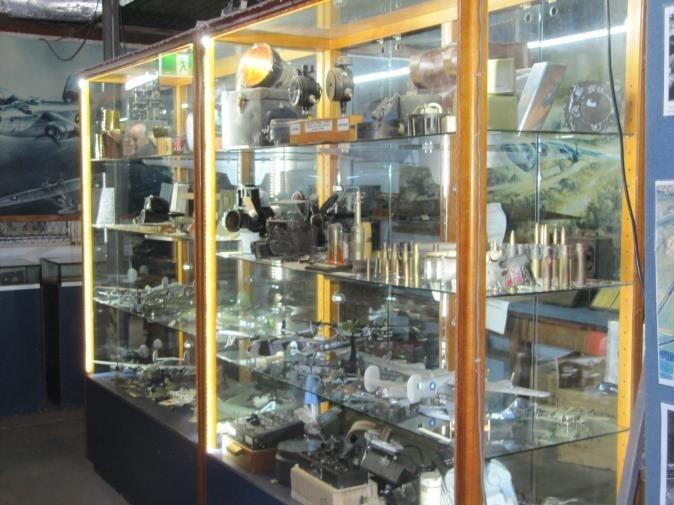
New low voltage lighting in the display cabinets look good and is safer.
We’ve purchased adaptors for the hangar lights so we’ll be able to use LEDs.



